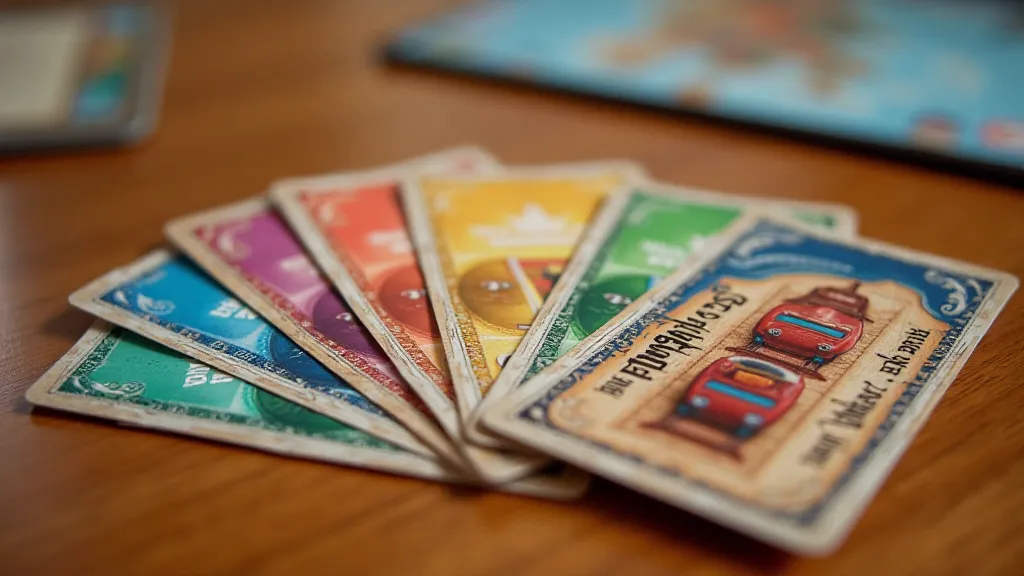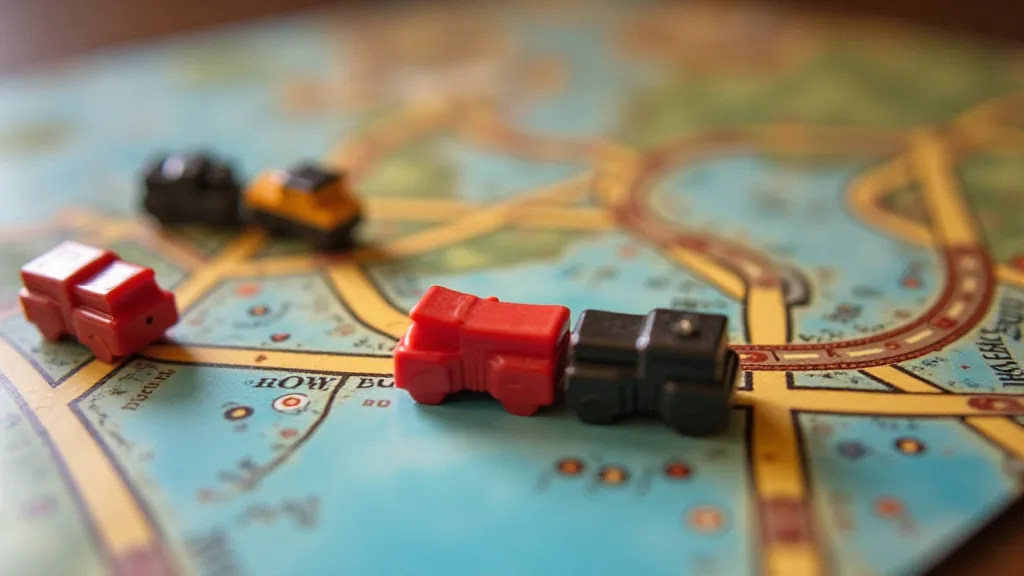Beginner's Guide to Ticket to Ride: Mastering the Rails
Ticket to Ride is a beloved gateway board game, known for its accessible rules and engaging gameplay. If you're new to the world of tabletop gaming, or just curious about this popular title, this guide will provide you with everything you need to start your railroad empire. We'll cover the basics, share strategic tips, and highlight common mistakes to avoid. It's a game that exemplifies the broader appeal of family tabletop games, sparking a shared experience and a silent auction of value amongst players – much like the complexities seen in games like 7 Wonders.
What is Ticket to Ride?
In Ticket to Ride, players compete to claim railway routes across a map of North America (or other regions, depending on the version you’re playing). You’re given Destination Tickets, which show two cities you need to connect with your trains. The longer the route, the more points you earn. But be warned – if you don’t complete those tickets by the end of the game, you *lose* those points!

The Core Mechanics: Gathering and Claiming Routes
Each player starts with a handful of train car cards in various colors (red, blue, green, yellow, black, white, and pink). On your turn, you have one of three options:
- Draw Train Car Cards: You can draw two cards from the face-down deck, or one face-up card (but if you take a face-up locomotive – a wild card – you can only draw one card total).
- Claim a Route: To claim a route on the board, you must discard train car cards matching the color and number of spaces on that route. Grey routes can be claimed with any single color.
- Draw Destination Tickets: You draw three new Destination Tickets, and must keep at least one. This is risky – failing to complete these tickets results in point deductions! The decision of how many tickets to draw speaks to a larger strategic decision in many tabletop games; it’s an element explored in greater depth in games like 7 Wonders, where carefully building your civilization demands a similar assessment of risk and reward.
Scoring: Routes, Tickets, and Bonuses
Scoring in Ticket to Ride is straightforward but nuanced:
- Route Length: You earn points based on the length of the routes you claim. Longer routes are worth significantly more.
- Destination Tickets: Successfully completing your Destination Tickets awards you the points indicated on the card.
- Longest Continuous Path: The player with the longest continuous path of trains at the end of the game earns a bonus. The pursuit of that longest path embodies a broader appeal for interconnectedness and strategic planning that resonates across many tabletop experiences.
Strategic Route Planning: Connecting the Cities
Good route planning is the key to victory. Here are a few tips:
- Prioritize Destination Tickets: Always keep your Destination Tickets in mind. They dictate your strategic direction.
- Block Opponents: Watch what routes your opponents are trying to claim, and strategically block them if possible, especially for crucial connections. Blocking an opponent’s path, or anticipating their moves, is a fundamental element in nearly every strategic tabletop game – a nuance of the ‘silent auction’ described more poetically elsewhere.
- Consider Alternatives: Sometimes, the most direct route isn't always the best. Be prepared to reroute based on available cards and opponent actions. This adaptability is crucial, especially when facing opponents who are equally skilled at adapting their strategies.
- Be Flexible: Don't get fixated on one route. Opportunities can change quickly. This requires a broader awareness of what’s happening around the table, rather than tunnel visioning on your own objectives.

The Importance of Card Management
Beyond simply claiming routes, efficient card management is vital to success. Knowing when to draw, when to discard, and which colors to prioritize can significantly influence your chances of victory. This element of strategic resource acquisition and optimization is a core mechanic in many deckbuilding games, such as those found in the Intro to Deckbuilding and beyond. Understanding the fundamentals of deckbuilding can provide a fresh perspective on optimizing your hand in Ticket to Ride. It also shares a similar demand for careful planning and calculated risk as you might find when deciding which games to play from a selection of Top 10 Board Games for Two Players.
Common Pitfalls to Avoid
Even experienced players make mistakes. Here's what to watch out for:
- Ignoring Opponents: Don’t tunnel vision! Pay attention to what your opponents are doing.
- Drawing Too Many Tickets: While drawing new tickets can be tempting, it can backfire if you can't complete them. The gamble of drawing more tickets is a testament to the inherent risk and reward that defines so many tabletop experiences.
- Tunneling: Focusing solely on your own tickets without considering your opponents' plans can be a recipe for disaster.
- Leaving Routes Open: Leaving critical routes unclaimed can allow opponents to easily connect cities and hinder your progress. This is particularly damaging when faced with an opponent who’s adept at capitalizing on opportunities.

Advanced Strategies for Seasoned Rail Tycoons
Once you're comfortable with the basic rules, you can start exploring more advanced strategies to elevate your gameplay. One key technique is analyzing the board state and predicting your opponents’ moves. Consider the routes they are targeting, the cards they are collecting, and the overall direction of their strategy. Are they aggressively claiming routes, or are they patiently building their card collection? Are they focused on high-scoring routes, or are they prioritizing the completion of specific destination tickets? This level of observation and anticipation is crucial for outmaneuvering your opponents and seizing control of the game.
Another advanced strategy is understanding the value of gray routes. While gray routes can be useful for claiming routes of any color, they can also be a source of contention between players. If multiple players are competing for the same gray route, it can lead to a bidding war, driving up the cost of claiming the route and potentially wasting valuable resources. It've important to weigh the benefits of claiming a gray route against the potential cost before committing your resources. Furthermore, recognizing the subtle cues and dynamics at play – a game of perception and reaction – creates a truly unique and captivating social experience. The entire process embodies a form of negotiation and shared understanding, akin to the value systems explored in the The Silent Auction of Shared Experience. These dynamics highlight the richer layers of player interaction that extend beyond the simple act of claiming routes and drawing cards. It mirrors the need for thoughtful decision making found in games that require more than just simple route planning, such as those explored in Understanding Worker Placement: Agricola and Beyond.
Beyond the Rails: Ticket to Ride’s Influence
The appeal of Ticket to Ride extends beyond just the joy of building railroads. Its accessible rules and strategic depth have inspired countless other games and influenced game design broadly. The challenge of anticipating your opponents’ moves and strategically blocking their routes resonates with the complex negotiations found in games of diplomacy, emphasizing that sometimes the most effective path to victory isn's always the most direct.
Conclusion: All Aboard for Fun!
Ticket to Ride is a fantastic game for all ages and skill levels. With a bit of practice and strategic thinking, you’re well on your way to becoming a railway tycoon. So gather your friends and family, and prepare to embark on a journey of connection and competition!





